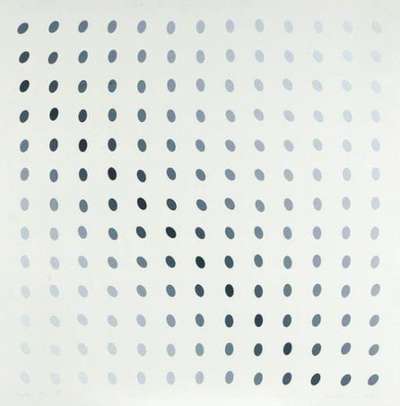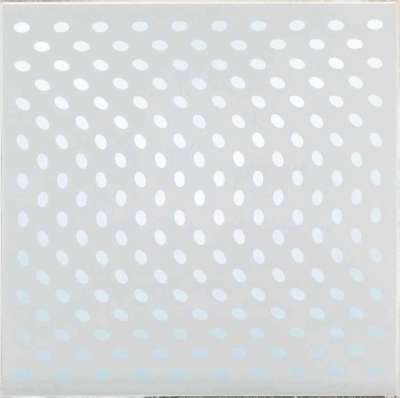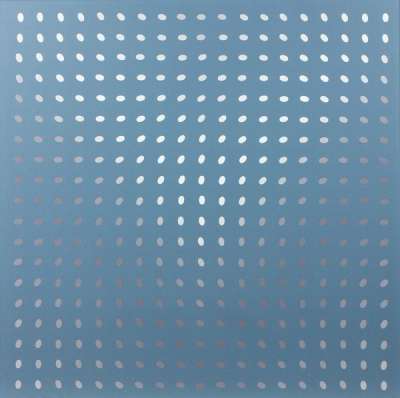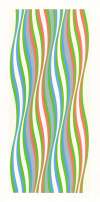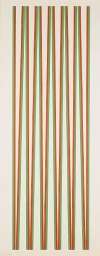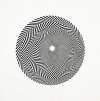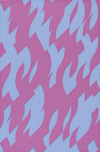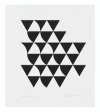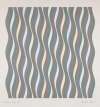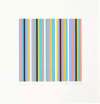Nineteen
Greys
Executed in 1968, Nineteen Greys is a series of four screen prints by British artist Bridget Riley. Each print depicts 19 different hues of grey, in a precise and ordered arrangement. Through her nuanced handling of tone, the Op Artist gave the impression of depth and movement in these prints - typical of Riley’s oeuvre in its entirety.
Bridget Riley Nineteen Greys For sale
Nineteen Greys Value (5 Years)
With £65128 in the past 12 months, Bridget Riley's Nineteen Greys series is one of the most actively traded in the market. Prices have varied significantly – from £690 to £26000 – driven by fluctuations in factors like condition, provenance, and market timing. Over the past 12 months, the average selling price was £10854, with an average annual growth rate of 11.58% across the series.
Nineteen Greys Market value
Auction Results
| Artwork | Auction Date | Auction House | Return to Seller | Hammer Price | Buyer Paid |
|---|---|---|---|---|---|
 Nineteen Greys (complete set) Bridget Riley Signed Print | 25 Oct 2024 | Christie's New York | £9,775 | £11,500 | £16,000 |
 Nineteen Greys A Bridget Riley Signed Print | 27 Sept 2023 | Christie's London | £4,675 | £5,500 | £7,500 |
 Nineteen Greys B Bridget Riley Signed Print | 27 Sept 2023 | Christie's London | £4,250 | £5,000 | £7,000 |
 Nineteen Greys C Bridget Riley Signed Print | 27 Sept 2023 | Christie's London | £4,675 | £5,500 | £7,500 |
 Nineteen Greys D Bridget Riley Signed Print | 26 Apr 2022 | Doyle Auctioneers & Appraisers | £3,443 | £4,050 | £5,500 |
Sell Your Art
with Us
with Us
Join Our Network of Collectors. Buy, Sell and Track Demand
Meaning & Analysis
A set of 4 prints, each containing 19 different grey hues, 19 Greys show Riley in her element, forcing us to question our own visual perception. In this suite, Riley’s precise and ordered arrangement of oval shapes interact with precise variations in luminosity, colour and geometry, which bring the artist’s thematisation of the mechanisms of the screen print process into sharp focus. The frenetic interplay of order and disorder within each piece implores the viewer to reflect on how vision is inherently deceptive.
The series embodies Riley’s vision of screen printing as the ideal process for her optically challenging images. The works’ mode of production enables Riley, as a painter, to achieve uniformity and consistency of colour in her mark-making. Painting, as a medium, can fail to deliver the precise shifts in light and shade which Riley’s work often demands. In each of the works in this series, the interplay between the shades of warm grey and ovals of cold grey offsets the grid of ovals to achieve a visceral sense of optical disruption. The artist’s rejection of painting’s potential for tonal inaccuracy allows for the production of compelling and unyielding illusions.
The beckoning to experience the tension between the works’ structure and the sensations they provoke evinces Riley’s utopian vision of art as a fundamentally social experience, whereby the viewer completes the artist’s act of creation. Each viewer’s unique sensory experience (often described as a feeling akin to seasickness or skydiving) defies the regimented reproductive quality of the print medium. Much like in Current (1964), there is a confusion of background and foreground. Are we witnessing ovals printed over a darker background or a porous layer printed atop a lighter background? This uncertainty adds to the sense of unease and furthers the dialogue between artist and viewer, with the work as interlocutor.
Perhaps distilling what Riley admired in the work of the pointillists, Georges Seurat in particular, the Nineteen Greys series produces a sensation in the viewer which alludes to primal feelings that resist intellectualisation, akin to those which drive the act of creation in the first place. In Riley’s own words, “those fleeting sensations which pass unrecognised by the intellect are just as important as those which become conscious.”
Produced in the late ’60s, when Riley was on the cusp of a thorough and bold exploration of colour, this series’ monochromatic potency places the tension between mode of production and visual sensation centre stage, making it a vital moment in the career of this giant of Op Art.

